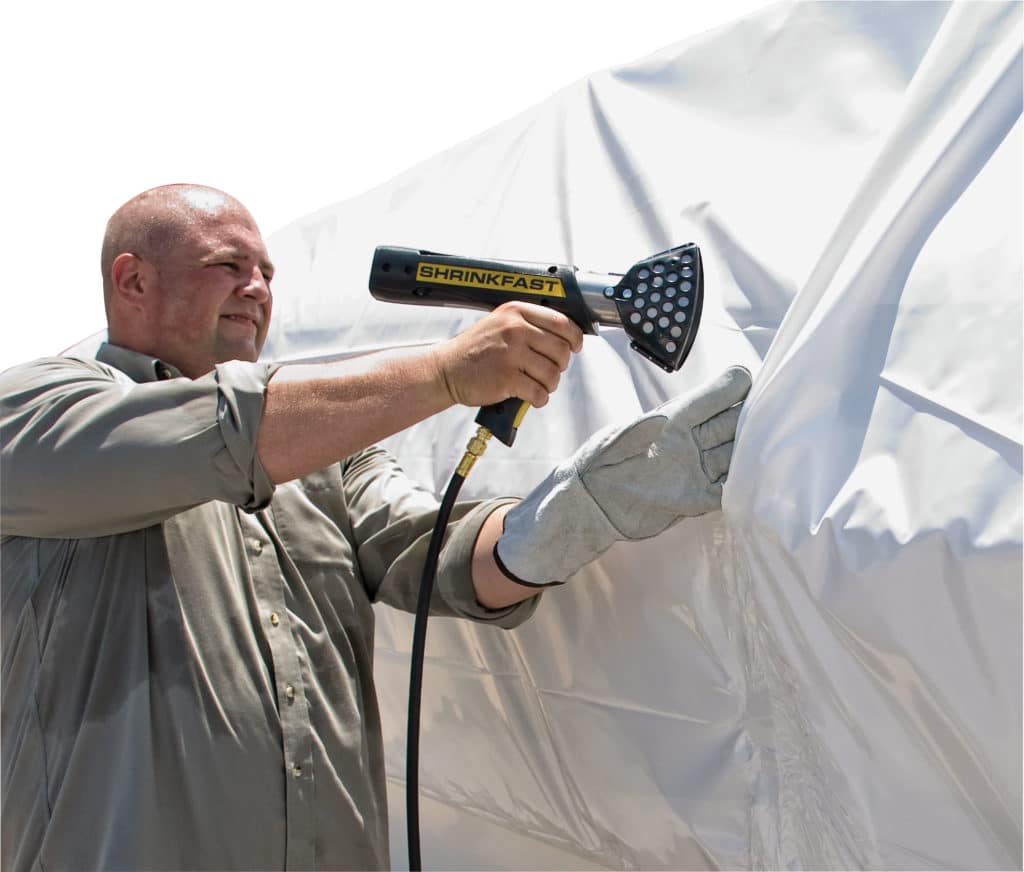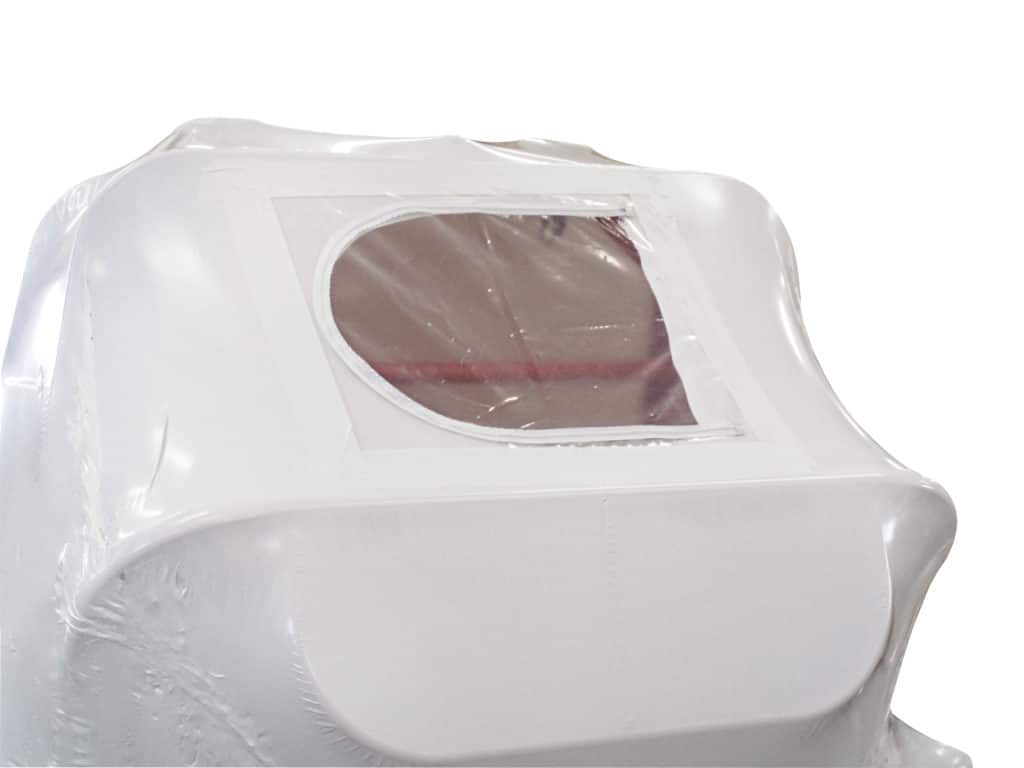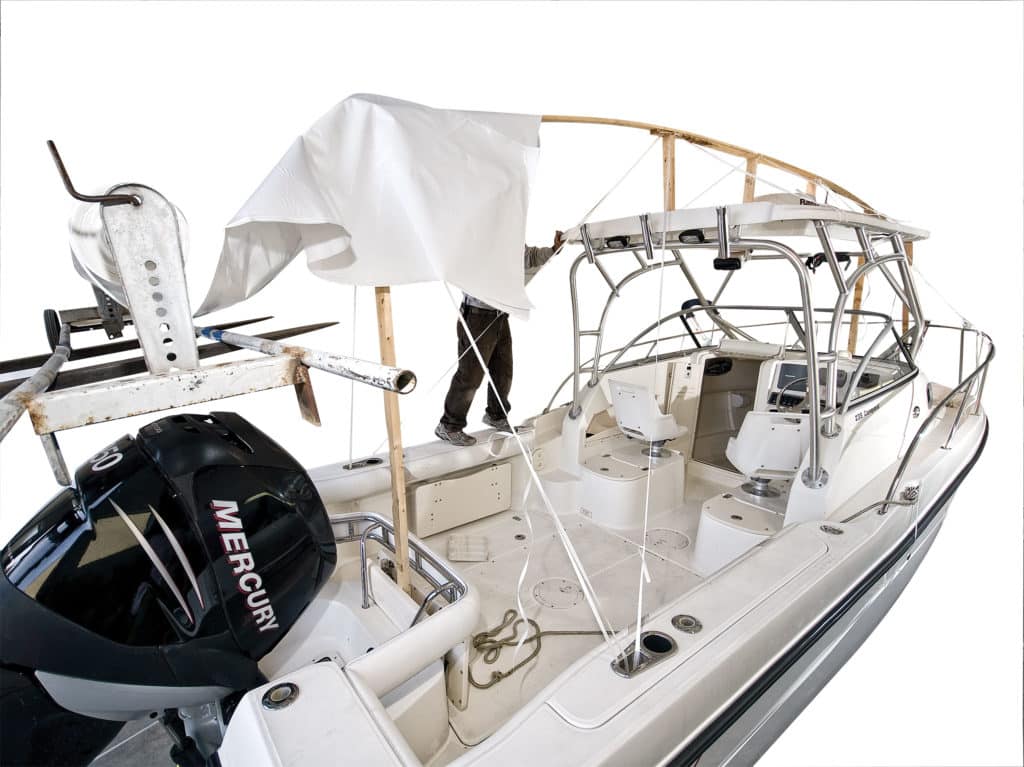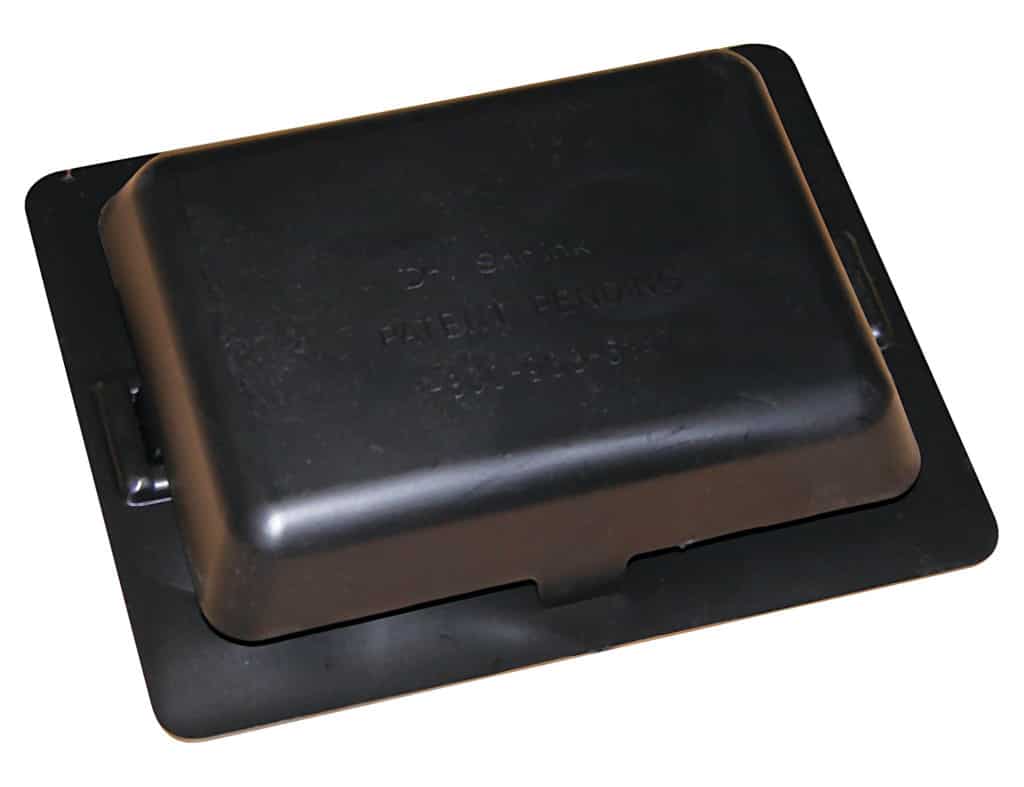
Shrink-wrap offers quick, thorough protection against harsh weather, but most shrink-wrap jobs leave little—if any—access to boats while covered. If your plans include over-winter work beneath that cover, consider these enhancements to your boat’s wintertime wrap.

Zipper Door
It’s tempting to just rig a flap taped over an opening, but pros say that causes trouble. “Shrink-wrap tape sticks well on fresh film, but when it’s cold or snowy, that tape won’t stick,” says Ryan Polcyn from shrink-wrap supplier Dr. Shrink (dr-shrink.com). The result is frustration while you’re aboard, as well as a potential failure point in winter storms. “Zipper doors allow smooth, easy access as many times as you need,” he says. Dr. Shrink’s doors range from 36-by-30 inches all the way up to 82-by-42 inches to ease access for people, parts and tools.
Wait until after the wrap is completely installed and shrunk tight before taping the closed door’s perimeter in place, and at the very end, unzip it and cut the film spanning inside the doorway. Bigger doors aren’t necessarily better because you’ll want to orient doors on flat areas as near vertical as possible to avoid leaks that often come if doors turn corners. Plan ahead so you won’t block doorways with supports or straps, and stay clear of easily damaged seat cushions.

Headroom
Instead of a straight slope from the radar arch or hardtop to the transom, add vertical support posts aft, if that’s your boarding or work area. Just be sure centerline ridge posts are higher than posts farther outboard so the cover will shed snow and rain—try for at least a 1-foot rise for every 8-foot run. Fit plastic caps atop two-by-four posts to protect shrink-wrap film, and rig straps to hold those posts upright.

Ventilation
Polcyn suggests increasing ventilation by half—a 30-foot boat normally needs eight vents, so increase to 12 vents to accommodate wintertime work. “Vents should be about one-third of the way down from the top ridge, spaced evenly around the boat,” he says.
Heat
Polcyn, from Michigan, points out that small gas heaters, like the Mr. Heater brand, are routinely safely employed in small, fairly weather-tight ice-fishing shanties. With adequate vents installed in the boat’s cover, he is nominally concerned with low oxygen or high carbon monoxide from using such heaters while working aboard. Still, he prefers electric heat whenever possible, principally because a byproduct of burning propane is water vapor, which invites mildew beneath the cover. Electric heaters dry the air instead.
Blue Shrink-Wrap
It absorbs the sun’s rays and sheds snow faster than white, but the light beneath blue wrap is dim and shaded blue. Switch to white wrap to vastly improve work-area lighting. White also stays cooler during warm springtime workdays.









